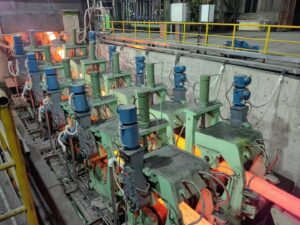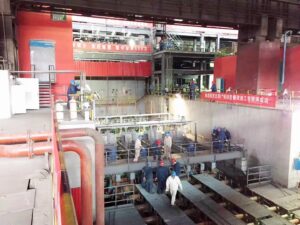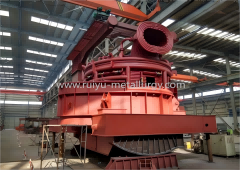1.Overview of Metallurgical Industry
Metallurgical industry refers to the metal ore mining, smelting, processing and metal products manufacturing industry, covering the ferrous metal smelting and rolling processing industry, non-ferrous metal smelting and rolling processing industry and other sub-sectors. Metallurgical industry is one of the important basic industries of the global economy, providing raw materials and parts for construction, automobile, aerospace and other industries, and its development level directly affects the development of other industries. With the recovery of the global economy, the rise of emerging markets and the progress of science and technology, the metallurgical industry is facing unprecedented development opportunities and challenges.
2.Development Status of Metallurgical Industry in 2025
Market Size and Growth
In recent years, the market size of the metallurgy industry has been expanding. As of 2022, the total market size of China’s metallurgy industry reached 13.34 trillion yuan, up 5.03% from the previous year. It is expected that in the next few years, with the gradual recovery of the global economy and the rise of emerging markets, the market size of the metallurgy industry will continue to maintain a growth trend.
Industry Chain Analysis
The metallurgy industry chain covers various links from raw material collection to final product application, including raw material collection, energy and auxiliary material supply, semi-finished product manufacturing, metal product manufacturing, and end-use application. These links are interrelated and interdependent, together constituting a complete metallurgical industry chain.
Market Competition Pattern
The metallurgical industry is highly competitive in both domestic and international markets. Large-scale iron and steel enterprises and non-ferrous metal enterprises dominate the market by virtue of scale advantages, technological advantages and brand advantages. Small and medium-sized enterprises, on the other hand, seek breakthroughs in market segments through flexible business strategies, low costs and differentiated products.
Technological Innovation and Green Development
Enterprises have increased their investment in R&D and are committed to the development and application of new materials, processes and technologies. At the same time, with the global awareness of environmental protection, the metallurgical industry is facing increasingly stringent environmental protection requirements, enterprises need to increase environmental protection investment and promote green development.
3. The main driving force for the development of the metallurgical industry
Market demand growth
The rapid development of construction, automotive, aerospace and other areas of steel, non-ferrous metals and other metallurgical products continue to increase demand. At the same time, the rise of emerging markets also provides a broad market space for the metallurgical industry.
Policy Support and Industrial Upgrading
In order to support economic development, the Chinese government will implement a more active fiscal policy and a moderately loose monetary policy, and plans to expand domestic demand in all aspects. These policies will provide strong support for the development of the metallurgical industry. At the same time, the government will also increase the environmental protection supervision of the metallurgical industry to promote the green development of the industry.
Technological innovation and digital transformation
With the promotion of industrial Internet and intelligent manufacturing technology, the metallurgical industry will accelerate the pace of digital transformation. Through intelligent equipment and data analysis and other technical means to improve production efficiency and quality, reduce production costs. In the future, the metallurgical industry will achieve a higher level of intelligence and informationization.
International development and high-end trend
With the integration of the global economy and the advancement of trade liberalization, the internationalization of the metallurgical industry will continue to increase. At the same time, the market demand for high-performance, high value-added metals continues to grow, the metallurgical industry will pay more attention to high-end and differentiated development.
4. Future Development Trends and Prospect Forecast of Metallurgical Industry
Market Size and Growth Rate
It is expected that in the next few years, the market size of the metallurgy industry will continue to maintain the growth trend. It is predicted that from 2024 to 2030, the total scale of China’s metallurgical engineering industry will grow at a CAGR of 6.5%, reaching RMB 870 billion by 2030.
Technological Innovation and Green Development
In the future, the metallurgical industry will pay more attention to technological innovation in environmental protection, energy saving and digital transformation. Through the introduction and independent research and development of new technologies, production efficiency will be improved, energy consumption and emissions will be reduced, and the transformation and upgrading and high-quality development of the industry will be promoted.
Synergistic development of industrial chain
With the development of the metallurgical industry, all links of the industry chain will pay more attention to synergistic development. By strengthening the cooperation and synergy between upstream and downstream enterprises, the industry chain will be perfected and developed, and the overall competitiveness will be improved.
Internationalization strategy and high-end development
In the future, metallurgical enterprises will actively explore the international market, strengthen cooperation and exchanges with international counterparts, and enhance international competitiveness. At the same time, through the development of new materials, new technologies and new processes, they will meet the needs of high-end fields such as aerospace, electronics and energy, and promote the industry’s development in the direction of high-endization.





